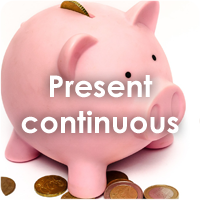Het arrangement 5.4 Saving money - tto123 is gemaakt met Wikiwijs van Kennisnet. Wikiwijs is hét onderwijsplatform waar je leermiddelen zoekt, maakt en deelt.
- Auteur
- Laatst gewijzigd
- 11-05-2025 18:05:41
- Licentie
-
Dit lesmateriaal is gepubliceerd onder de Creative Commons Naamsvermelding-GelijkDelen 4.0 Internationale licentie. Dit houdt in dat je onder de voorwaarde van naamsvermelding en publicatie onder dezelfde licentie vrij bent om:
- het werk te delen - te kopiëren, te verspreiden en door te geven via elk medium of bestandsformaat
- het werk te bewerken - te remixen, te veranderen en afgeleide werken te maken
- voor alle doeleinden, inclusief commerciële doeleinden.
Meer informatie over de CC Naamsvermelding-GelijkDelen 4.0 Internationale licentie.
Aanvullende informatie over dit lesmateriaal
Van dit lesmateriaal is de volgende aanvullende informatie beschikbaar:
- Toelichting
- Deze les valt onder de arrangeerbare leerlijn van de Stercollecties voor Engels voor tweetalig onderwijs, leerjaar 1, 2 en 3. Dit is thema 5 'Shopping'. Het onderwerp van deze les is: Saving money. Deze les gaat over geld besparen. Bij de leesopdracht wordt het voordeling shoppen en winkelen met een budget behandeld en bij de luisteropdracht gaat het over het begrijpen een video over het maken van een boodschappenlijstje. De grammaticaopdracht gaat over de present continuous.
- Leerniveau
- VWO 2; HAVO 1; VWO 1; HAVO 3; VWO 3; HAVO 2;
- Leerinhoud en doelen
- Engels;
- Eindgebruiker
- leerling/student
- Moeilijkheidsgraad
- gemiddeld
- Studiebelasting
- 1 uur 40 minuten
- Trefwoorden
- arrangeerbaar, boodschappenlijstje, budget, engels, geld besparen, present continuous, saving money, stercollectie, tto123, voordeling shoppen
Gebruikte Wikiwijs Arrangementen
VO-content Engels. (2020).
1.1 Introducing yourself - tto123
https://maken.wikiwijs.nl/169502/1_1_Introducing_yourself___tto123
VO-content Engels. (2023).
5.4 Saving money - hv12

 The subject of this double period is saving money.
The subject of this double period is saving money.

 How to shop on a budget
How to shop on a budget

 To be able to do all the assignments correctly, you need to know some words and sentences.
To be able to do all the assignments correctly, you need to know some words and sentences.
 Do you remember what the present continuous is?
Do you remember what the present continuous is?
 In a clothes shop
In a clothes shop An essay about saving money
An essay about saving money What have you learned in this period?
What have you learned in this period?
